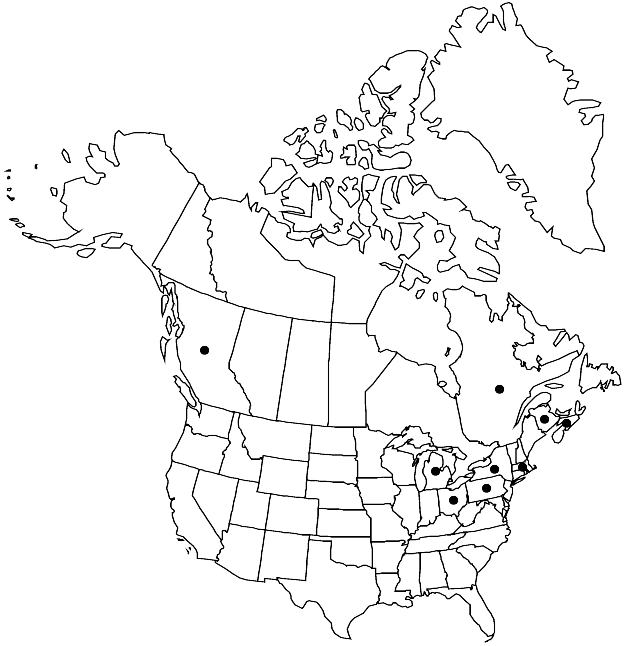Difference between revisions of "Bunias orientalis"
Sp. Pl. 2: 670. 1753.
FNA>Volume Importer |
imported>Volume Importer |
||
| Line 8: | Line 8: | ||
}} | }} | ||
|common_names=Turkish rocket | |common_names=Turkish rocket | ||
| + | |special_status={{Treatment/ID/Special_status | ||
| + | |code=W | ||
| + | |label=Weedy | ||
| + | }}{{Treatment/ID/Special_status | ||
| + | |code=I | ||
| + | |label=Introduced | ||
| + | }} | ||
|basionyms= | |basionyms= | ||
|synonyms= | |synonyms= | ||
| Line 23: | Line 30: | ||
|habitat=Roadsides, fields, pastures, meadows, disturbed areas, waste places | |habitat=Roadsides, fields, pastures, meadows, disturbed areas, waste places | ||
|distribution=B.C.;N.B.;N.S.;Que.;Mass.;Mich.;N.Y.;Ohio;Pa.;Europe;Asia. | |distribution=B.C.;N.B.;N.S.;Que.;Mass.;Mich.;N.Y.;Ohio;Pa.;Europe;Asia. | ||
| + | |introduced=true | ||
|tables= | |tables= | ||
|references= | |references= | ||
| Line 44: | Line 52: | ||
|publication title=Sp. Pl. | |publication title=Sp. Pl. | ||
|publication year=1753 | |publication year=1753 | ||
| − | |special status= | + | |special status=Weedy;Introduced |
| − | |source xml=https:// | + | |source xml=https://bibilujan@bitbucket.org/aafc-mbb/fna-data-curation.git/src/bb6b7e3a7de7d3b7888a1ad48c7fd8f5c722d8d6/coarse_grained_fna_xml/V7/V7_672.xml |
|tribe=Brassicaceae tribe Buniadeae | |tribe=Brassicaceae tribe Buniadeae | ||
|genus=Bunias | |genus=Bunias | ||
Revision as of 00:59, 28 May 2020
Biennials or perennials; sparsely to densely pilose. Stems usually branched distally, rarely basally, (2.5–)4–10(–15) dm. Basal leaves: petiole (1–)2–10(–15) cm; blade lanceolate, 10–45 cm, margins coarsely dentate or pinnatifid, lateral lobes oblong or lanceolate, (terminal lobe deltate or lanceolate, larger than lateral lobes). Cauline leaves: (distalmost) blade lanceolate or sublinear. Fruiting pedicels divaricate, straight, 1–2(–2.3) cm. Flowers: sepals spreading, 2.5–4 × 1–1.5 mm; petals (4–)4.5–7(–8) × (2–)3–5 mm, claw (slender), 1–2 mm; filaments 1.5–3.5 mm; anthers 0.8–1 mm. Fruits ovoid, or, rarely, suboblong and slightly constricted at middle, terete, not winged, 1- or 2-loculed, (0.5–)0.6–0.7(–0.8) cm × 3–4(–5) mm, (gradually tapering to apex); style obsolete or, rarely, to 1 mm. Seeds 1 or 2 per fruit, 2–3.5 mm. 2n = 14.
Phenology: Flowering Jun–Aug.
Habitat: Roadsides, fields, pastures, meadows, disturbed areas, waste places
Distribution

Introduced; B.C., N.B., N.S., Que., Mass., Mich., N.Y., Ohio, Pa., Europe, Asia.
Discussion
Selected References
None.